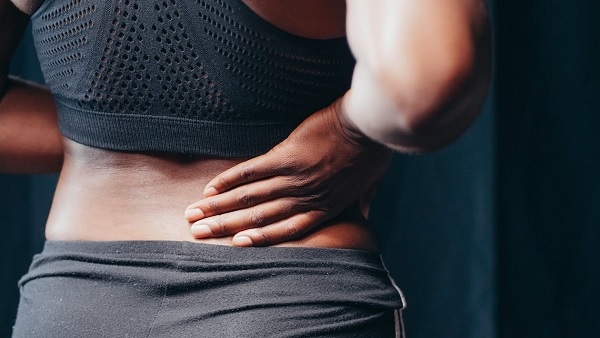Muscle aches? Here Are 6 Recuperation Techniques to Feel Better

Anyone who is physically active will eventually get painful muscles. This is especially true if you're experimenting with a new routine, working out for a longer period of time than normal, or intensifying your exercise.
According to Kyle Gonzalez, NSCA, CSCS, CES, FMS level 1, a performance coach at Future, an app that connects users with a virtual fitness coach, muscle soreness is brought on by micro-tears and inflammation in the muscle and is a reaction to physical stress from exercise. "Movement increases the sensitivity of the pain receptors by causing minor swelling as a result of the inflammation, micro-tears, and increased blood flow. Although soreness is a natural process, without the proper support it can be crippling and result in harm." This brings up a crucial point: Pay attention to your body at all times!
Here are six methods for reducing muscle soreness and accelerating the healing process so you can feel as good as new again.
Active Restoration
It may take a few days to feel like yourself again after a soreness that lasts for a full 24 hours. It doesn't always follow that you can't continue working out while you're healing. However, you might want to go more slowly. Instead of taking a challenging HIIT class, think about conducting an active recovery with lower-intensity exercise like a good stroll.
Gonzalez claims that "active recuperation or modest exercise can reduce discomfort, improve blood flow, flush out bodily waste products, and support training adaption." "Simply getting up and moving throughout the day is one of the best ways to relieve painful muscles naturally because it is quick, simple, and handy. I enjoy doing low-impact exercises like yoga, stretching, and light cardio (swimming, walking, riding)." Gonzalez points out that while static stretching is one of the most frequently recommended ways to treat muscular discomfort, it has a relatively little direct analgesic effect. "Often, it has more of a placebo effect, and correct dynamic warm-up and cool-down techniques should be prioritized instead."
Having a Massage
Another frequently recommended way of easing muscle pain is massage. "It has been demonstrated that massage increases blood flow, which lowers inflammation. Additionally, it increases mitochondria, which aid in cell maintenance and function "Gonzalez said. Contrary to popular belief, he advises choosing a soothing, light massage over a deep tissue or a more aggressive massage for discomfort.
Using Heat and Ice
It has been demonstrated that aching muscles can benefit from both heat and ice. "Heat treatment improves flexibility by boosting blood flow and circulation to the muscles, relieving any pain, and relaxing the muscles. Ice reduces blood flow to the muscles, which reduces swelling and inflammation "Gonzalez says. Alternating between heat and ice can also be productive. Gonzalez suggests either having a warm shower or applying an ice pack, followed by a heating pad, to the particular hurting area. He continues, "Taking a warm bath with Epsom salt, which is actually magnesium and sulfate when broken down, can be helpful in lowering discomfort and relaxing the muscles.
Sleeping Well
Although it's not a glamorous option, sleep is where the majority of healing and mending occurs. The body can unwind, eliminate chemical waste, mend damaged tissue, and lessen pain sensitivity when sleeping, thus Gonzalez says obtaining seven to nine hours every night is crucial.
Nutrition
Numerous meals can help with discomfort reduction by lowering inflammation and recharging depleted energy reserves. Below, Gonzalez lists a few that work well:
*Tart cherry juice helps ease joint and muscle discomfort (but watch out for high amounts of added sugar).
*Spices with anti-inflammatory properties like turmeric might lessen muscle injury.
*Whey protein, which helps replace muscle protein quickly, and casein protein, which is slow-acting and can support the process while you sleep, are both abundant in cottage cheese.
*Antioxidants included in green tea help prevent muscle and cell deterioration and improve hydration.
*Omega-3 fatty acids found in nuts and seeds help to reduce inflammation, and protein helps to keep muscles from breaking down.
*Sweet potatoes are a complex carbohydrate that restores glycogen stores and is high in nutrients.
Use Muscle Rollers
The use of foam rollers can help muscles relax and increase flexibility and range of motion. Rolling devices are an effective and reasonably priced alternative that can help blood flow, according to Gonzalez.
Use OTC Options With Caution
Gonzalez advises avoiding over-the-counter remedies in the majority of cases, but anti-inflammatories like ibuprofen may occasionally be helpful. "A healthy training regimen depends on having a coach who asks you about your level of soreness and gives feedback on how your body should be responding to exercise. Before using any over-the-counter medications, always make sure they are safe and suitable for you. In the same vein, consult your healthcare provider if your muscular soreness lasts more than a week, if you have intense pain rather than a dull ache, or if you are unable to do daily activities for a prolonged length of time.
Post a Comment